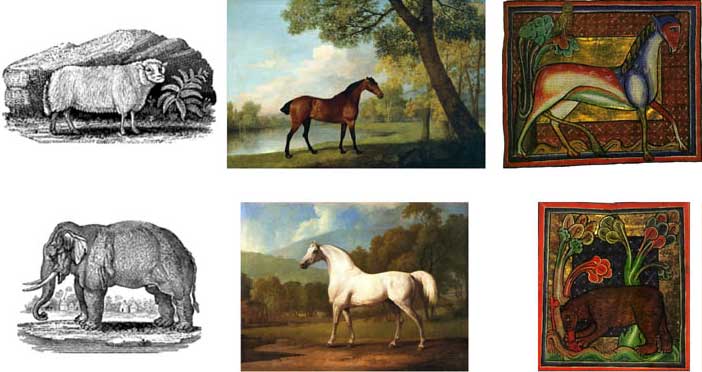Composition is an important topic in visual art. The literature suggests a bias for objects on the right side (Levy, 1976) and two additional biases with respect to positioning of objects within a rectangular frame: a Centre bias and an Inward bias (Palmer, Gardner & Wickens, 2008).
We analysed images of animals from three datasets of works of art: two datasets were from artists well known for their portraits of animals (Thomas Bewick and George Stubbs) and the third was a medieval bestiary. There was no overall displacement of the subject to the right or to the left of the picture. However, we found a bias consisting of more space in front compared to behind the animal, consistent with Palmer at al.'s findings and with their definition of an Inward bias. Because our animals never face towards the centre we use the term Anterior bias.
In addition, we found a modulation of this bias on the basis of the facing direction of the animal, consisting of a stronger Anterior bias for left facing animals. This asymmetry may originate from a combination of an Anterior bias and a Right bias.

Examples of animals from Bewick (left, sheep and elephant), from Stubbs (centre, horses) and from the bestiary (right, chameleon and bear). The top row shows animals facing to the right and the bottom row animals facing to the left.
Reference:
Bertamini, M. Bennett, K.M. & Bode, C. (2011). The anterior bias in visual art: The case of images of animals. Laterality, 16, 673-689.
DOI: 10.1080/1357650X.2010.508219
